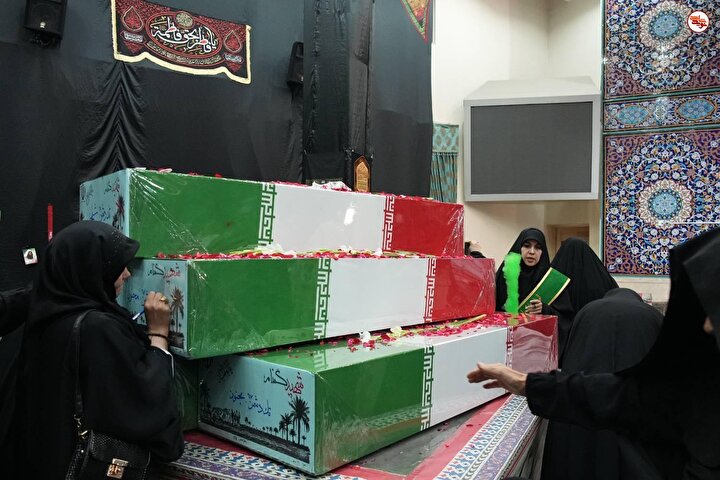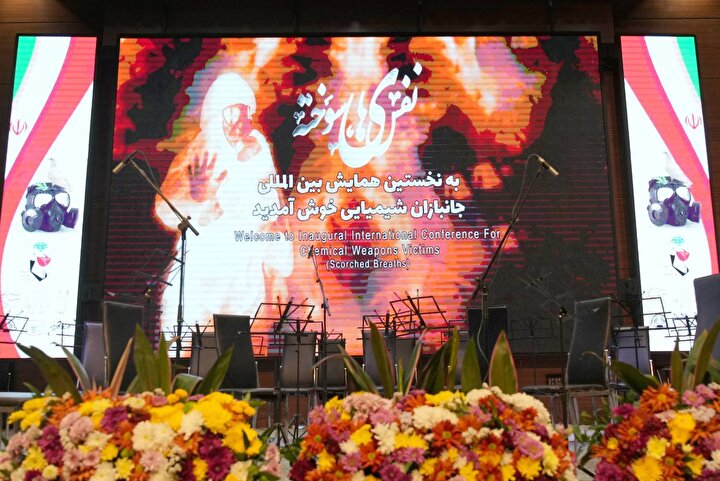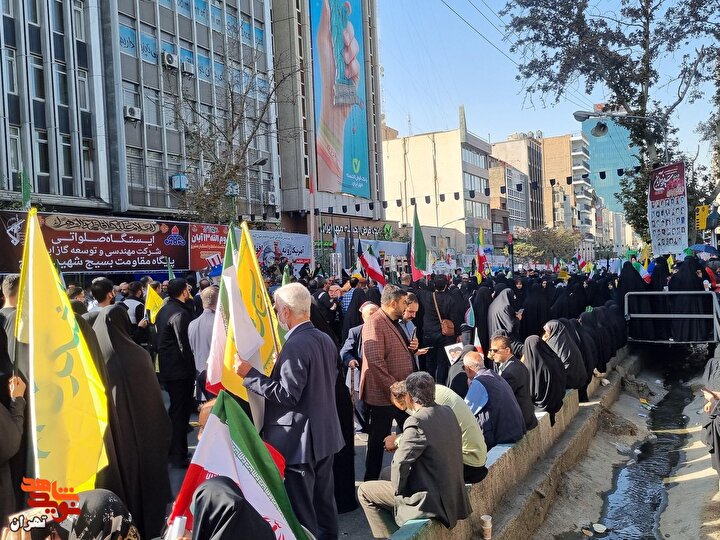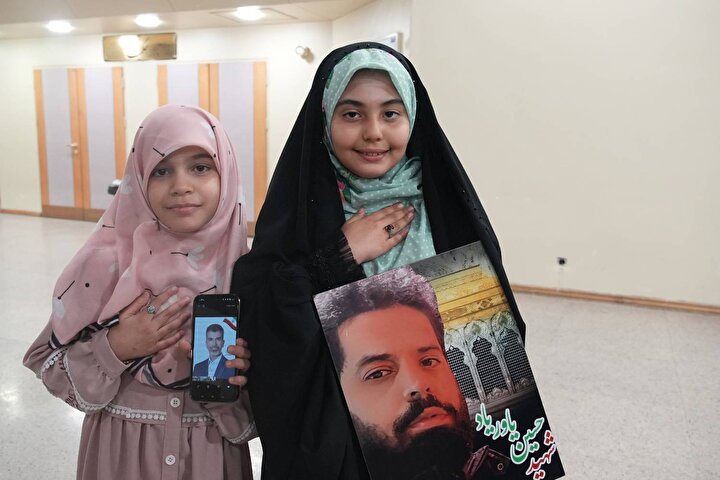
Why al-Qaeda abandoning ISIL: Ideological dispute or power struggle?
Navideshahed- The Islamic State of Iraq, which later became the Islamic State of Iraq and the Levant (ISIL), was never really a subordinate of al-Qaeda. The groups’ relationship dates back to 2003, when Abu Musab al-Zarqawi swore an oath of allegiance to Osama bin Laden. The religious dispute between the two terrorist groups, however, is new, as all reconciliation attempts have so far failed.
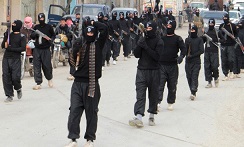
A statement attributed to al-Qaeda, published by the Fajr Media Center, a terrorist propaganda platform, announced that al-Qaeda has no official ties to ISIL. According to the statement, al-Qaeda was never notified, consulted, or approached about the founding of ISIL. Instead, the statement continued, al-Qaeda has called for dissolving the group, stressing that ISIL “is not a branch of Qaedat al-Jihad [al-Qaeda], and has no organizational ties to it.”?
In truth, all indications suggest that al-Nusra Front leader Abu Mohammed al-Golani mutinied against Baghdadi, the man who originally sent Golani to Syria. This is not the first time that al-Qaeda has disowned ISIL, but this episode indicates the depth of their disagreements. In November 2013, Ayman al-Zawahiri, the preeminent figure in the global terrorist movement, called for dissolving ISIL, and proclaimed ISIL’ rival al-Nusra Front as al-Qaeda’s official branch in Syria. Shortly after, al-Nusra Front took part in some battles alongside the Saudi-backed Islamic Front against ISIL.
The story does not start there, however. The issue is not just a dispute among terrorist emirs over who should be leading in the Syrian arena. Instead, an ideological-religious dispute is at the heart of the battles between the Islamic Front and ISIL.
Indeed, the Islamic Front has called its offensive against ISIL “the Battle of Nahrawan”? and ISIL has linked its battle with the Islamic Front to “the Wars of Apostasy.”?
A strange version of that history is repeating itself in Syria, with war raging among the terrorist groups. Relentless battles are taking place among armed opposition groups, and so far, all attempts at reconciliation have failed.
The Islamic State of Iraq was established as a “peacetime,”? rather than a “wartime,”? structure.
The infighting has drawn interventions by Salafi-terrorist ideologues, such as Sheikh Abu Iyad al-Tunisi, emir of Ansar al-Sharia in Tunisia, who issued a statement in support of those he called the “mujahideen in the Levant.”? For his part, the director of al-Maqrizi Center for Historical Studies, Egyptian Sheikh Hani al-Sibai, attacked the factions who have assaulted ISIL. Jordanian Sheikh Issam al-Barqawi, known as Abu Mohammed al-Maqdisi, sent out a letter criticizing ISIL. In turn, Sheikh Omar Othman, who is known as Abu Qatada al-Filastini, called on the emir of ISIL, Abu Bakr al-Baghdadi, to withdraw from Syria or merge with al-Nusra Front.
These interventions, however, have only deepened the state of division. Only the initiative of Saudi Sheikh Abdullah al-Mohisni to create an Islamic court of arbitration has been taken somewhat seriously. Most warring factions approved of the initiative, except ISIL, which thanked Mohisni but said that the fighting in Syria was not a “rift among the mujahideen, but rather a war waged by a heretical faction against the mujahideen.”?
Amid the conflicting positions and the excessive issuing of fatwas of apostasy, we should return to the beginnings of this affair. Had Baghdadi pledged an oath of allegiance to Zawahiri to begin with, to justify accusations of reneging on his oath? In truth, all indications suggest that al-Nusra Front leader Abu Mohammed al-Golani mutinied against Baghdadi, the man who originally sent Golani to Syria.
And what, exactly, is the relationship between al-Qaeda and ISIL? The ties between the two date back to the US occupation of Iraq following the 2003 US-led invasion. Back then, 16 extremist factions were fighting in Iraq, including: Jaysh Ahl al-Sunna, Ansar al-Islam, Jaysh al-Sahaba, Jaysh al-Khilafa, Jaysh Mohammad, and al-Tawhid wal Jihad, led by Jordanian national Abu Musab al-Zarqawi, who swore allegiance to the leader of al-Qaeda at the time, Osama bin Laden.
When Golani was asked to reintegrate his group with ISIL, he refused, causing the rift that we see today.
After Zarqawi pledged allegiance to al-Qaeda, he changed his group’s name to al-Qaeda in Mesopotamia. Later on, al-Qaeda organized terrorist groups into an alliance called Hilf al-Mutayibin. Abu Bakr al-Baghdadi was chosen as its emir; before he formed the Islamic State of Iraq, with a view to establish a caliphate in the areas where Sunnis are a majority in Iraq.
In the terrorists’ understanding, this was necessary because the area under their control needed a state to manage their affairs, and this is where the crux of the matter lies: The Islamic State of Iraq was established as a “peacetime,”? rather than“wartime,”? structure.
According to a Salafi cleric, “There are two types of emirates in the Salafi doctrine: a general Islamic emirate, that is, a Muslim state under the name of caliphate, as it was in the time of Prophet Mohammad; and a special Islamic emirate, which can be either for jihad and proselytizing, or for governing.”? This, they say, is the source of the dispute between ISIL and the rest of the terrorist factions.
Baghdadi followed in the footsteps of Taliban leader Mullah Omar, that is, moved from being an emir of a group to an emir of a state, before he was toppled following the US invasion of Iraq.
To be sure, the “governing emirate”? that Baghdadi declared was meant to manage the affairs of the Muslims in the ISIL-controlled areas, the Salafi source said. The “Jihadi emirate,”? by contrast, “would focus on combat until the enemy is defeated, and does not concern itself with managing the affairs of the people.”?
In Syria, Baghdadi aimed to expand his power, and created al-Nusra Front, tasking Golani with coordinating terrorist operations in Syria. When Golani was asked to reintegrate his group with ISIL, he refused, causing the rift that we see today.
To declare his state, Baghdadi said the areas under his control needed a governor. Therefore it was imperative, from a Sharia perspective, to convert his group from the terrorist type to the governing type. Next, a Shura council was formed, which then appointed Baghdadi as the “emir of the faithful.”? Baghdadi subsequently appointed ministers, governors, and officers to collect Zakat money, and outlined domestic and foreign policy for his “state.”?
As a result, all armed factions present in the ISIL-controlled areas had to either pledge allegiance to him to keep their arms, leave to fight in other areas, or lay down their arms.
With this, Baghdadi followed in the footsteps of Taliban leader Mullah Omar, who had assumed the Emirate of the Islamic State in Afghanistan, that is, moved from being an emir of a group to an emir of a state, before he was toppled following the US invasion of Iraq. The same can be said about Ansar al-Sharia in Yemen, and al-Qaeda’s emirate in Mali.
Baghdadi considers himself a “ruling emir,”? while Zawahiri considers him the “emir of a group.”? This is while bearing in mind that Zawahiri himself is the emir of a group since he does not control any geographical areas where he can implement Sharia -- though he is a global terrorist emir who commands the allegiance of many factions throughout the world.
The fighting among terrorists in Syria continues. Foreign fighters, who are known as the “muhajirin,”? or emigrants, side with ISIL, while the majority of Syrian-born terrorists; known as “al-Ansar,”? the partisans, side with al-Nusra. In the meantime, an undeclared battle over Saudi Arabia is intensifying: The Islamic Front is fighting ISIL at the behest of the Saudi government, while ISIL and al-Nusra both declare the latter as an infidel regime.
Source: Al-akhbar
A statement attributed to al-Qaeda, published by the Fajr Media Center, a terrorist propaganda platform, announced that al-Qaeda has no official ties to ISIL. According to the statement, al-Qaeda was never notified, consulted, or approached about the founding of ISIL. Instead, the statement continued, al-Qaeda has called for dissolving the group, stressing that ISIL “is not a branch of Qaedat al-Jihad [al-Qaeda], and has no organizational ties to it.”? In truth, all indications suggest that al-Nusra Front leader Abu Mohammed al-Golani mutinied against Baghdadi, the man who originally sent Golani to Syria. This is not the first time that al-Qaeda has disowned ISIL, but this episode indicates the depth of their disagreements. In November 2013, Ayman al-Zawahiri, the preeminent figure in the global terrorist movement, called for dissolving ISIL, and proclaimed ISIL’ rival al-Nusra Front as al-Qaeda’s official branch in Syria. Shortly after, al-Nusra Front took part in some battles alongside the Saudi-backed Islamic Front against ISIL. The story does not start there, however. The issue is not just a dispute among terrorist emirs over who should be leading in the Syrian arena. Instead, an ideological-religious dispute is at the heart of the battles between the Islamic Front and ISIL. Indeed, the Islamic Front has called its offensive against ISIL “the Battle of Nahrawan”? and ISIL has linked its battle with the Islamic Front to “the Wars of Apostasy.”? A strange version of that history is repeating itself in Syria, with war raging among the terrorist groups. Relentless battles are taking place among armed opposition groups, and so far, all attempts at reconciliation have failed. The Islamic State of Iraq was established as a “peacetime,”? rather than a “wartime,”? structure. The infighting has drawn interventions by Salafi-terrorist ideologues, such as Sheikh Abu Iyad al-Tunisi, emir of Ansar al-Sharia in Tunisia, who issued a statement in support of those he called the “mujahideen in the Levant.”? For his part, the director of al-Maqrizi Center for Historical Studies, Egyptian Sheikh Hani al-Sibai, attacked the factions who have assaulted ISIL. Jordanian Sheikh Issam al-Barqawi, known as Abu Mohammed al-Maqdisi, sent out a letter criticizing ISIL. In turn, Sheikh Omar Othman, who is known as Abu Qatada al-Filastini, called on the emir of ISIL, Abu Bakr al-Baghdadi, to withdraw from Syria or merge with al-Nusra Front. These interventions, however, have only deepened the state of division. Only the initiative of Saudi Sheikh Abdullah al-Mohisni to create an Islamic court of arbitration has been taken somewhat seriously. Most warring factions approved of the initiative, except ISIL, which thanked Mohisni but said that the fighting in Syria was not a “rift among the mujahideen, but rather a war waged by a heretical faction against the mujahideen.”? Amid the conflicting positions and the excessive issuing of fatwas of apostasy, we should return to the beginnings of this affair. Had Baghdadi pledged an oath of allegiance to Zawahiri to begin with, to justify accusations of reneging on his oath? In truth, all indications suggest that al-Nusra Front leader Abu Mohammed al-Golani mutinied against Baghdadi, the man who originally sent Golani to Syria. And what, exactly, is the relationship between al-Qaeda and ISIL? The ties between the two date back to the US occupation of Iraq following the 2003 US-led invasion. Back then, 16 extremist factions were fighting in Iraq, including: Jaysh Ahl al-Sunna, Ansar al-Islam, Jaysh al-Sahaba, Jaysh al-Khilafa, Jaysh Mohammad, and al-Tawhid wal Jihad, led by Jordanian national Abu Musab al-Zarqawi, who swore allegiance to the leader of al-Qaeda at the time, Osama bin Laden. When Golani was asked to reintegrate his group with ISIL, he refused, causing the rift that we see today. After Zarqawi pledged allegiance to al-Qaeda, he changed his group’s name to al-Qaeda in Mesopotamia. Later on, al-Qaeda organized terrorist groups into an alliance called Hilf al-Mutayibin. Abu Bakr al-Baghdadi was chosen as its emir; before he formed the Islamic State of Iraq, with a view to establish a caliphate in the areas where Sunnis are a majority in Iraq. In the terrorists’ understanding, this was necessary because the area under their control needed a state to manage their affairs, and this is where the crux of the matter lies: The Islamic State of Iraq was established as a “peacetime,”? rather than“wartime,”? structure. According to a Salafi cleric, “There are two types of emirates in the Salafi doctrine: a general Islamic emirate, that is, a Muslim state under the name of caliphate, as it was in the time of Prophet Mohammad; and a special Islamic emirate, which can be either for jihad and proselytizing, or for governing.”? This, they say, is the source of the dispute between ISIL and the rest of the terrorist factions. Baghdadi followed in the footsteps of Taliban leader Mullah Omar, that is, moved from being an emir of a group to an emir of a state, before he was toppled following the US invasion of Iraq. To be sure, the “governing emirate”? that Baghdadi declared was meant to manage the affairs of the Muslims in the ISIL-controlled areas, the Salafi source said. The “Jihadi emirate,”? by contrast, “would focus on combat until the enemy is defeated, and does not concern itself with managing the affairs of the people.”? In Syria, Baghdadi aimed to expand his power, and created al-Nusra Front, tasking Golani with coordinating terrorist operations in Syria. When Golani was asked to reintegrate his group with ISIL, he refused, causing the rift that we see today. To declare his state, Baghdadi said the areas under his control needed a governor. Therefore it was imperative, from a Sharia perspective, to convert his group from the terrorist type to the governing type. Next, a Shura council was formed, which then appointed Baghdadi as the “emir of the faithful.”? Baghdadi subsequently appointed ministers, governors, and officers to collect Zakat money, and outlined domestic and foreign policy for his “state.”? As a result, all armed factions present in the ISIL-controlled areas had to either pledge allegiance to him to keep their arms, leave to fight in other areas, or lay down their arms. With this, Baghdadi followed in the footsteps of Taliban leader Mullah Omar, who had assumed the Emirate of the Islamic State in Afghanistan, that is, moved from being an emir of a group to an emir of a state, before he was toppled following the US invasion of Iraq. The same can be said about Ansar al-Sharia in Yemen, and al-Qaeda’s emirate in Mali. Baghdadi considers himself a “ruling emir,”? while Zawahiri considers him the “emir of a group.”? This is while bearing in mind that Zawahiri himself is the emir of a group since he does not control any geographical areas where he can implement Sharia -- though he is a global terrorist emir who commands the allegiance of many factions throughout the world. The fighting among terrorists in Syria continues. Foreign fighters, who are known as the “muhajirin,”? or emigrants, side with ISIL, while the majority of Syrian-born terrorists; known as “al-Ansar,”? the partisans, side with al-Nusra. In the meantime, an undeclared battle over Saudi Arabia is intensifying: The Islamic Front is fighting ISIL at the behest of the Saudi government, while ISIL and al-Nusra both declare the latter as an infidel regime. Source: Al-akhbar

